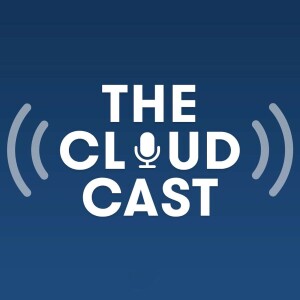
Jon Toor (CMO @ Cloudian) talks about the history and evolution of object storage, the rise of enterprise class object storage, and the changing economics of cloud storage.
SHOW: 726
CLOUD NEWS OF THE WEEK - http://bit.ly/cloudcast-cnotw
NEW TO CLOUD? CHECK OUT - "CLOUDCAST BASICS"
SHOW SPONSORS:
- CloudZero – Cloud Cost Visibility and Savings
- CloudZero provides immediate and ongoing savings with 100% visibility into your total cloud spend
- Datadog Application Monitoring: Modern Application Performance Monitoring
- Get started monitoring service dependencies to eliminate latency and errors and enhance your users app experience with a free 14 day Datadog trial. Listeners of The Cloudcast will also receive a free Datadog T-shirt.
SHOW NOTES:
- Cloudian website
Topic 1 - Welcome to the show Jon. Tell us a little bit about your background. Your career and Cloudian parallel in many ways.
Topic 2 - Cloudian has been around since before object storage was cool. We first heard about Cloudian back in the OpenStack and early AWS S3 days. Object storage has come a long way. Can you help everyone frame where we were and where we are today?
Topic 3 - We’ve seen the rise of Enterprise class, S3 compatible object storage for use cases like hybrid cloud, data sovereignty, and more recently analytics such as data lakehouses. Where are you seeing implementations these days as we’ve moved beyond basic, simple storage behind cloud backends.
Topic 4 - With the recent changes to the world economy, how much does economics come into conversations around the design of solutions. There’s often a healthy tension between what is technically possible and what is economically feasible. How does that design conversation play out lately?
Topic 5 - We used to talk about “Data Gravity” all the time. The concept for those unfamiliar is that data has a certain weight and attracts more data to existing sources and becomes hard to move over time. We haven’t talked about it as much in recent years and we are seeing the rise of hybrid and multicloud solutions but folks often don’t think about access to the data. Where are folks building large data sets? What are they using them for? Are they ever moving them?
Topic 6 - Last question, Cloudian is well known for their partnerships, alliances and solutions. You partner with hardware companies, software companies, backup companies, public clouds, etc. It’s quite a mix. Has this been a factor in Cloudian’s longevity and tell everyone a little bit about how this came to be and how important you see this for the future.
FEEDBACK?
- Email: show at the cloudcast dot net
- Twitter: @thecloudcastnet
More Episodes
 2022-11-20
2022-11-20
 2022-11-16
2022-11-16
 2022-11-13
2022-11-13
 2022-11-09
2022-11-09
 2022-11-06
2022-11-06
 2022-11-02
2022-11-02
 2022-10-30
2022-10-30
 2022-10-26
2022-10-26
 2022-10-23
2022-10-23
 2022-10-19
2022-10-19
 2022-10-16
2022-10-16
 2022-10-12
2022-10-12
 2022-10-09
2022-10-09
 2022-10-05
2022-10-05
 2022-10-02
2022-10-02
 2022-09-28
2022-09-28
 2022-09-25
2022-09-25
 2022-09-21
2022-09-21
 2022-09-18
2022-09-18
 2022-09-14
2022-09-14
Create your
podcast in
minutes
- Full-featured podcast site
- Unlimited storage and bandwidth
- Comprehensive podcast stats
- Distribute to Apple Podcasts, Spotify, and more
- Make money with your podcast
It is Free
- Privacy Policy
- Cookie Policy
- Terms of Use
- Consent Preferences
- Copyright © 2015-2024 Podbean.com





